If you want to experience a perfect show of professional discord, try watching a writer and a graphic designer work together on a layout.
Editors and writers look at text as an information flow, a succession of thoughts and ideas assuming a life of their own as they separate into paragraphs and units with the right spacing, the indents, the dashes. The punctuation infusing rhythm, the beat accelerating, the action flowing, then slowing down and stopping ever so gently. It’s a delicate process, hinging on an invisible logical thread – with which the layout should not interfere. I don’t mean to sound arrogant. Writers inhabit the parallel world of words, and can get sensitive about it.
To designers, the written word is not as important. Text is but a single item in the whole sub-unit that is the page, with its margins, negative space, images and graphic elements. They look at the spatial flow of paragraphs. They see through letters as if they were transparent, as if gauging the granular balance of black and white. They can ask editors to painstakingly chisel down a sentence until it fits into place. They would, if necessary, split a paragraph in two. It’s a humbling sight for a writer.
I was well aware of these thoughts as I entered my calligraphy class, and I tried to not let them influence me. After all, not having to pay attention to the content of my writing for once might be an interesting experience. Without pouring my thoughts into the page, I could focus on pure form, something I am rather unfamiliar with.
I realise that even beginners like myself can find great satisfaction in calligraphy, starting from day one.”
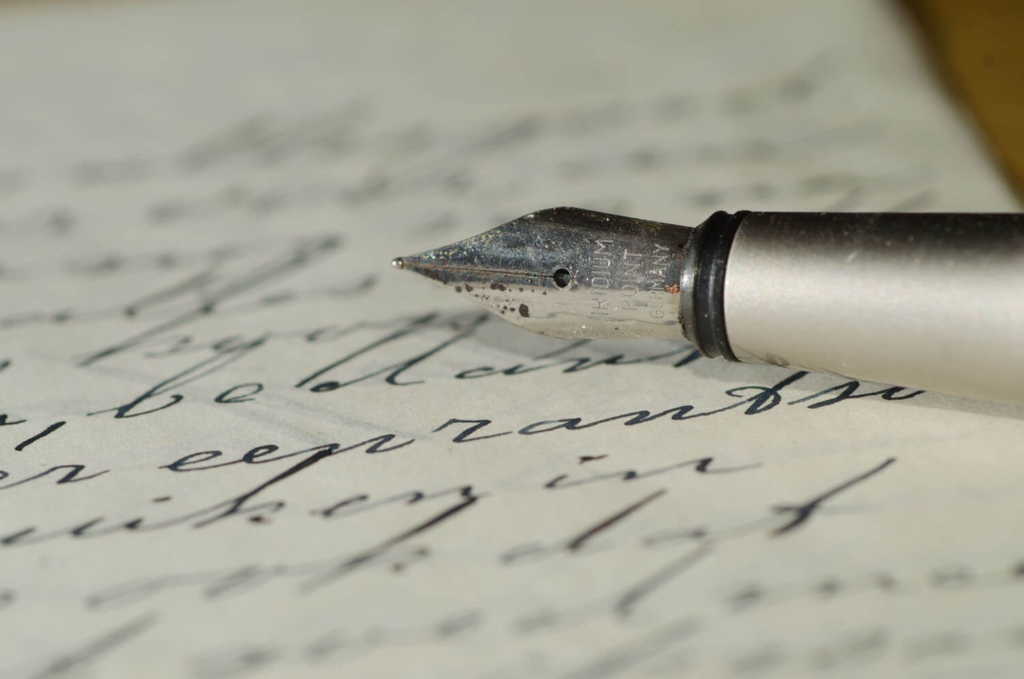
Sure, my handwriting is not too bad; fulfilling the writer cliché, I do swear by a precise pen make and model. I once hunted down a Japanese type foundry in search of a specific font, and I consider bad kerning an eyesore. Yet handling a dip pen and ink was maybe taking it too far.
My teacher is a calligraphy and lettering artist. I, along with four other women, are in her atelier, sitting in a sparkling-white room with a wall full of black-and-white calligraphed posters. They’re so enticingly beautiful that I find myself physically unable to retain their meaning. All my life I’ve focused on meaning. Now I look at the posters, I look away, and I can’t recall a word. Where am I? What is happening to me?
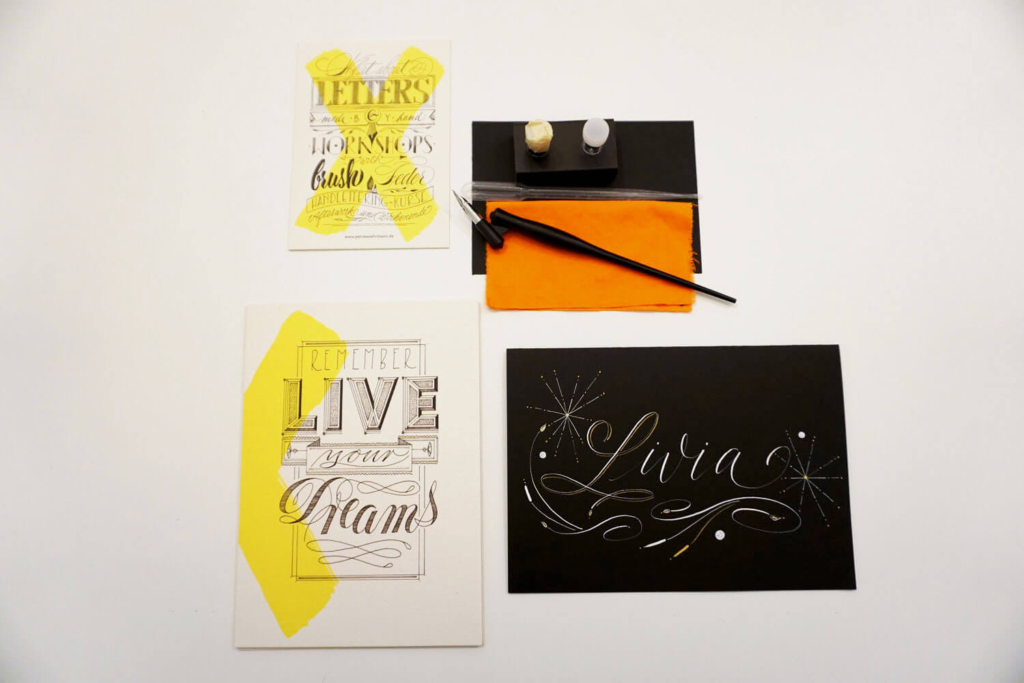
Each of us has a small pot of ink and an oblique calligraphy pen – easier on beginners, as it allows us to better slant our letters. We also need to tilt the page on the desk to familiarise ourselves with the new angle. We practice by drawing lines, angles, curves, then waves, then the alphabet in Copperplate script. As a classic beginner, I don’t dip my pen often enough, my lines are skewed, and my hand is insecure. I find myself obstinately drawing the same word over and over in hopes of getting it right. After the eighth repetition, I’m horrified to discover that it’s a nonsensical word. I didn’t even notice it; there was something about the flow of the curves.
In fact, meaning is the last thing on my mind, and for the next couple of hours, I fall deep into a form-driven trance. We sit quietly, in rapture, scratching beautiful words (whatever they might mean) on obliging sheets of paper, as the trainer corrects our angles and hand postures. While I don’t have to focus in the same way I do when I write, I still need to use all my concentration to handle the new tool, remember how to angle it, where to start drawing each letter, where to put pressure. It’s not easy to get it right, and the task demands my undivided attention, so there’s no space for anything else. After acknowledging a particularly long silence, all of us in the class agree on calligraphy’s relaxing properties. “It’s like hand yoga,” says our teacher.
She suggests practicing the entire alphabet in Copperplate, and writing “the quick brown fox jumps over the lazy dog” feels like graduating. That sentence – which to me as a writer had always felt empty and yes, absolutely transparent – is so beautiful that I can’t stop looking at it.
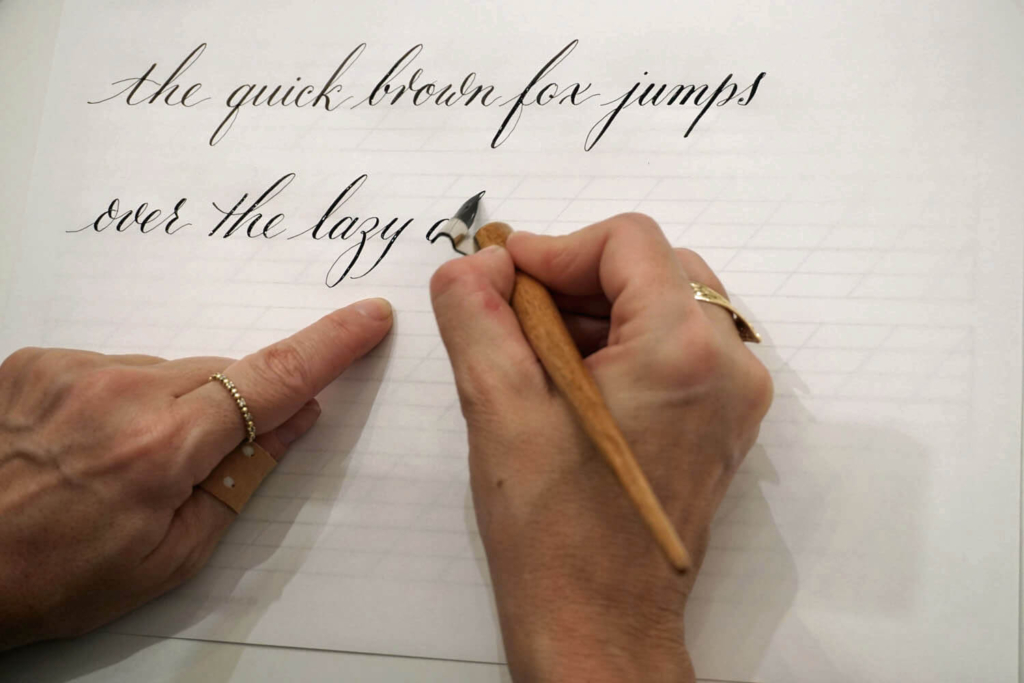
In that moment, I realise that even beginners like myself can find great satisfaction in calligraphy, starting from day one. So what if my friends and family will have to bear a slew of shakily handwritten cards in my ascent to mastery? I can absolutely see myself calmly writing away on a long winter’s night, a cup of tea on my desk and freshly fallen snow outside the window.
In the meantime, I surprisingly start to grow an aversion for the other kind of writing, the one which has always been extremely fulfilling to me, but still feels like I’m squeezing juice out of my brain. I’m so caught in the calligraphy exercise that I don’t want to think in that “other” way.
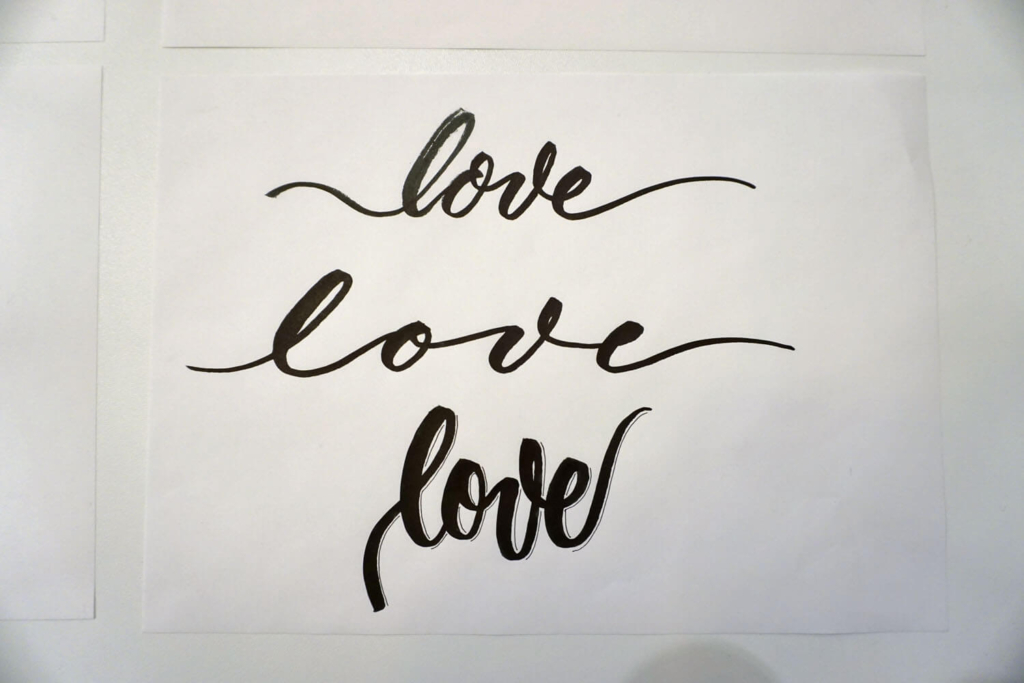
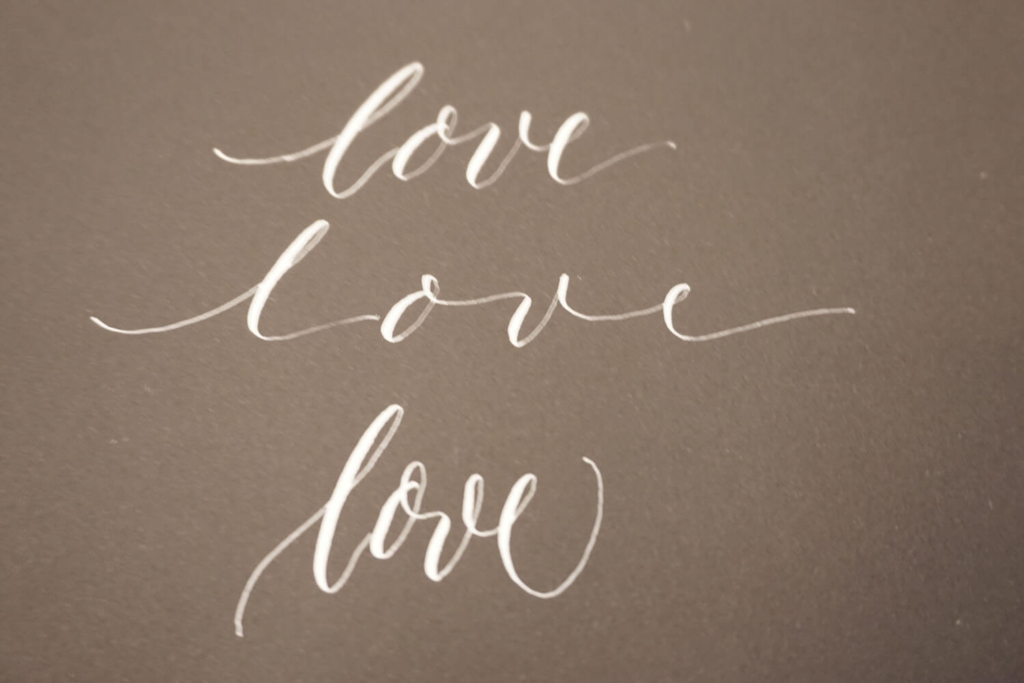
Case in point: I have been a consistent note-taker my whole life. Now, my notebook is next to me on the desk, my favourite pen is there, and the page is white. I simply don’t know how to put my awe into words; it’s a different kind of experience. I force myself to jot down my thoughts, and immediately see that my handwriting has become clearer. It’s not a conscious effort; my hand just flows.
Away from the practical world of ball point pens and keyboards, calligraphy has led me to an intimate experience of beauty, one that was refreshingly legitimate on its own, but that also showed me that there is no contrast between form and content: they are two different and complementary aspects of reality. Art and design play a fundamental role in our experience of the world, one we can greatly benefit from – if we give them a chance.
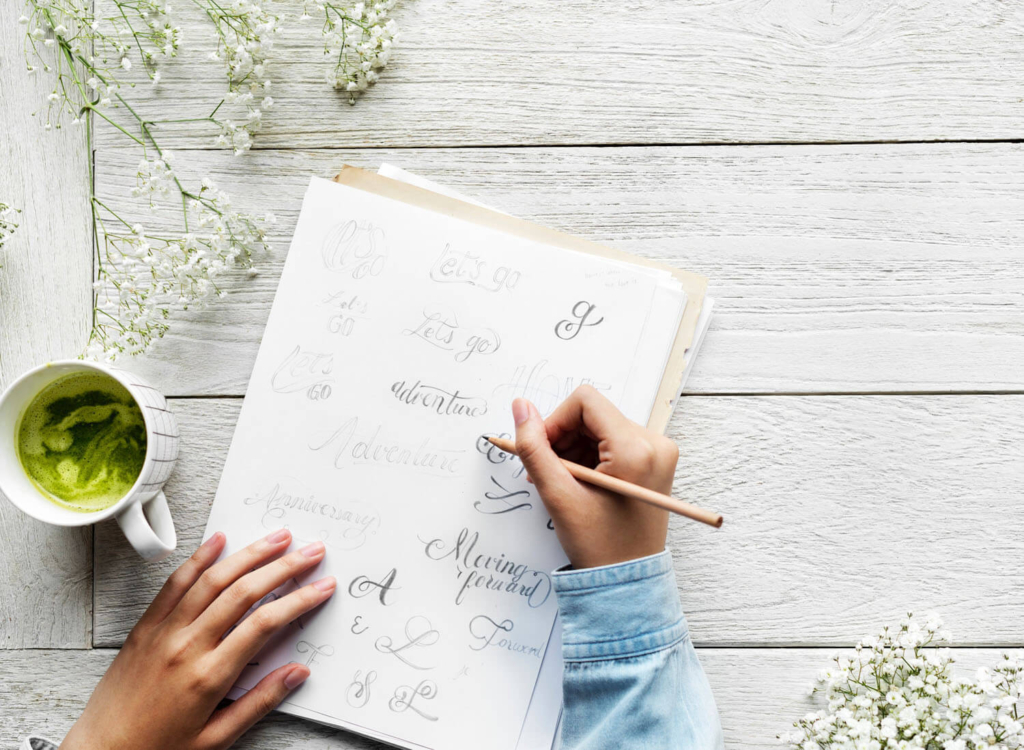
Perhaps an antidote to our busy world and overachiever lifestyles, calligraphy can be the perfect hobby to help you relax – and create a little art of your own.
Interested in trying calligraphy? Here are a few reading suggestions from calligraphy and lettering artist Petra Wöhrmann:
– Graphique de la Rue: The Signs of Paris by Louise Fili
– The Golden Secrets of Lettering: Letter Design from First Sketch to Final Artwork by Martina Flor
– Calligraphy: A Course in Cursive Script with Pencil, Pen, and Brush by Barbara Calzolari and Alessandro Salice

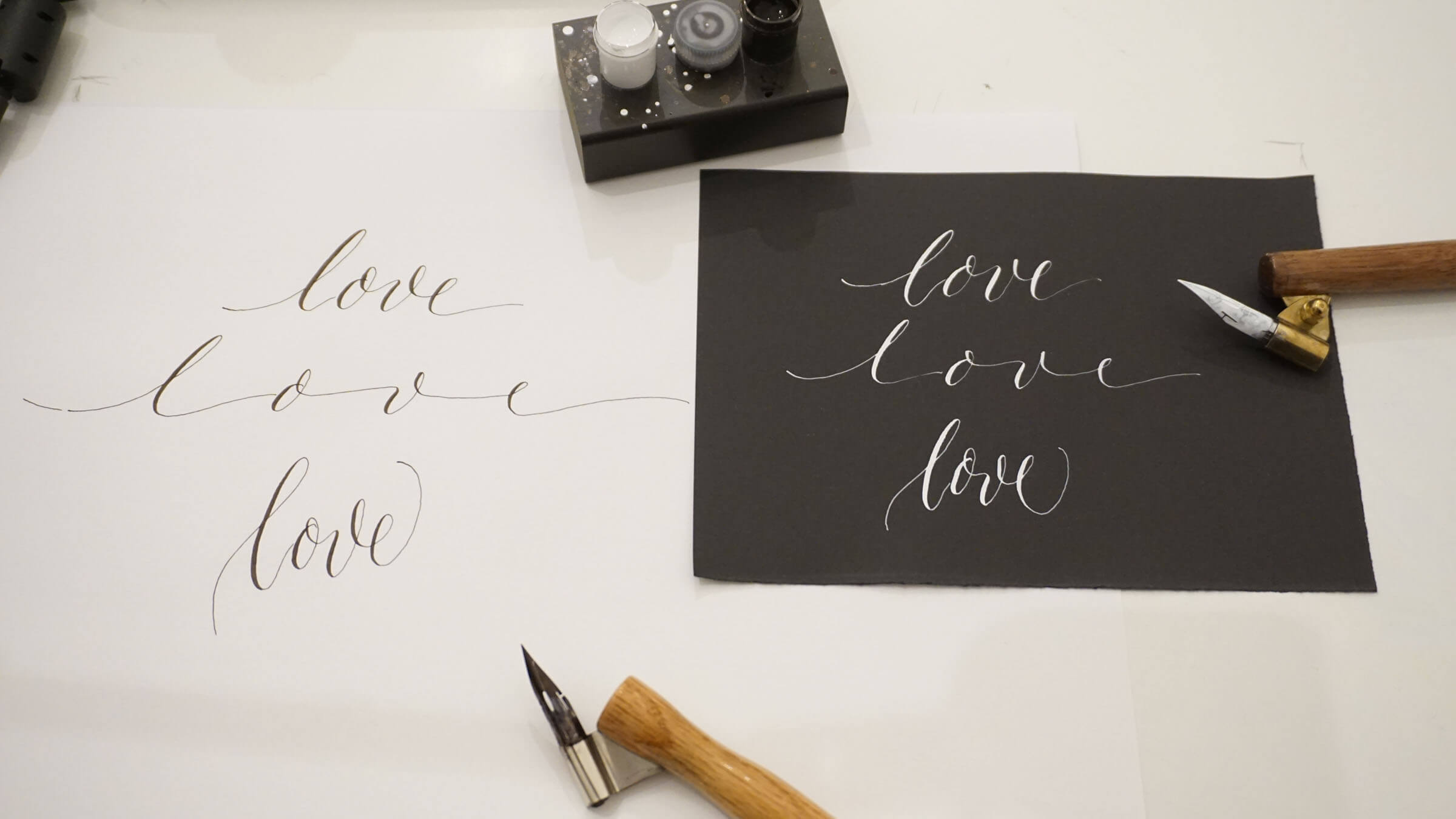












Sorry, the comment form is closed at this time.